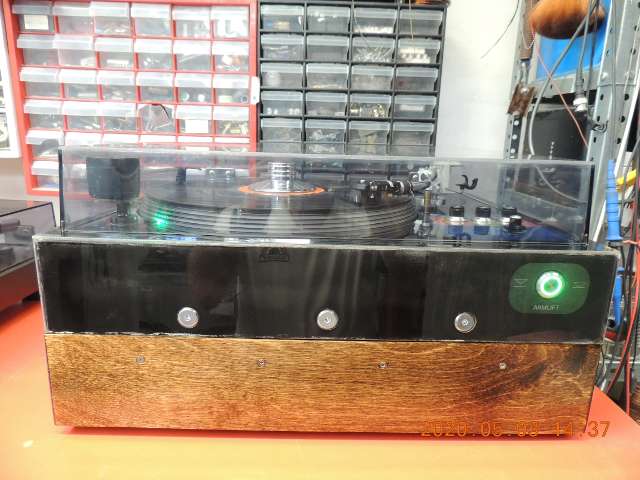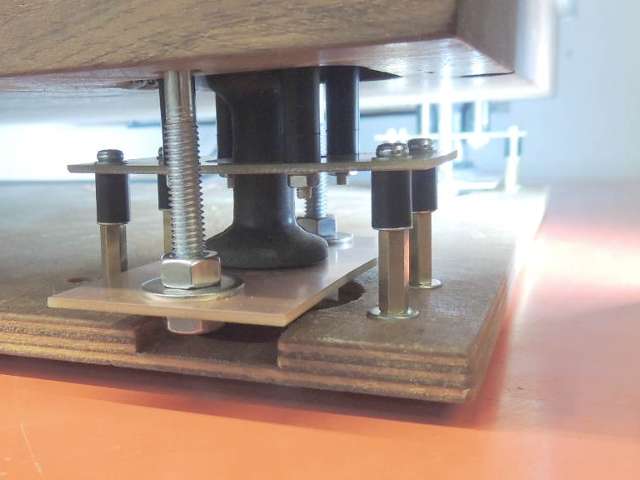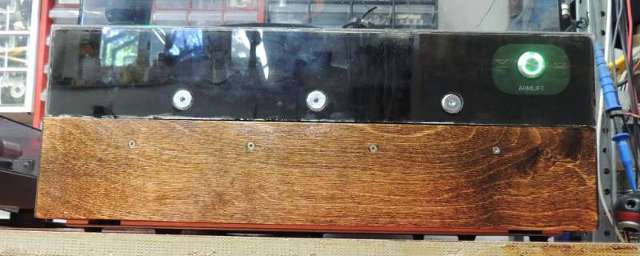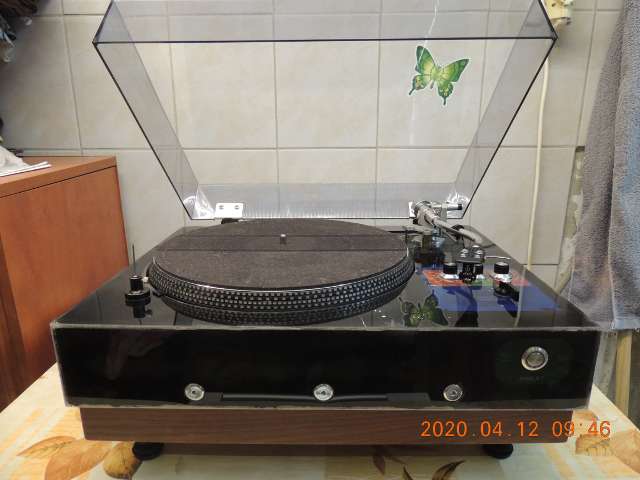 |
 |
|
 |

|
In the modified state, both the motor and the tonearm are fixed on a solid wood block.
The noise can be attenuated enough this way. See the other details about motor holder here and the arm suspension here. |
|
The turntable is ready and operating. More images of the turntable are here. |

|
|
On the picture at right you can see the internal parts assembled on the hardwood base. Its full mass (including cover) is cca 18 kg. Probably this is the most important part to reduce noise. Such a big mass with ehough strength can attenuate the mechanical noises of such a device. Before somebody would treat this as just a flam, let's calculate a bit: The size of the groove is 50 micrometer So, this is the size of the tip movement when playing loud music. But how much can be the maximum allowed displacement of the mechanical noise? The best vinyls can produce cca 60 dB signal to noise ratio This means one thousand times ratio of the amplitude (and one million times ratio of the power). If we would like the mechanical noises to be inaudible, it must have less displacement than the noise of the vinyl. Therefore it means that: The allowed displacement of the mechanical noise is less than 50 nanometers By the way, this is about tenths of the wavelength size of the visible light. It also means that some parts invisibly small for light microscopes can produce audible noise. But essentially the mechanical noise must be below 50 nanometers. This is the twenty-thousandth part of the millimeter. |

|
|
The mass itself is not enough to reduce noises, a flexible suspension is also necessary. There is a rubber suspension between the desk and the wooden base. It is quite complicated because the rubber must be subjected to tensile stress to form a stable structure.
|

|
| The covers are installed. |

|
|
This part also induces arguments within the audiophile world. The generic judgement is that using such a cover reduces audio quality. In such cases I usually try thinking and execute some measurements if possible. IMHO, this way I could contradict this belief too. However, it is based on some truth, see the details below. |

|